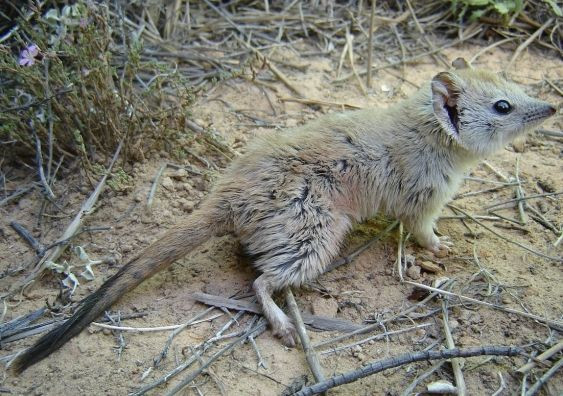Tiny Marsupial Believed To Be Extinct For 100 Years Found In Australia

The Australian crest-tailed mulgara, a tiny marsupial was long thought to be extinct, until now. The animal which has not been seen or studied for over a century has been discovered in New South Wales in Australia.
Researchers from the University of New South Wales (UNSW) stumbled across this amazing discovery at Sturt National Park near Tibooburra. In fact, the discovery was so out-of-the-blue that they weren’t even looking for the animal when they found it. They were at the National Park to restore and promote desert ecosystems.
The juvenile female crest-tailed mulgara, Dasycercus cristicauda, was caught in a trap in November by researchers working on the Wild Deserts project. They aim to reintroduce long-absent marsupials to two predator-free areas of the western edge of Sturt National park.
“The Crest-tailed Mulgara was once widely distributed across sandy desert environments in inland Australia, but declined due to the effects of rabbits, cats, and foxes,” said UNSW scientist and Wild Deserts ecologist Dr. Rebecca West said in a press release on the UNSW website.
Two separate areas of about 20 square-kilometers each will be fenced off from the nearby desert region in the Park.
Many species introduced into the ecosystem, that hunt these marsupials, like rabbits, cats and foxes will be kept out these two enclosures to ensure that the previously thought to be extinct like the greater bilby, the western quoll, and the western barred bandicoot can breed and get the numbers up to a considerable amount before releasing them into the wild.
The discovery comes at an ideal time for researchers, who are looking to reintroduce mammal species into the Sturt National Park which haven't been seen for 90 years, said the release.
Several species across the world are under the threat of extinction. The Sumatran rhinoceros is dwindling close to the thousands in number and several other animals are heading to the same fate now. When efforts like this succeed, they send a great message to conservationists across the world.
There is a huge dearth of resources in terms of natural habitat left for these animals to flourish. Efforts in India to rejuvenate the falling population of the Royal Bengal Tiger have gathered steam in the past decade and the numbers have slowly risen to respectable numbers compared to the lowest recorded estimates.
Scenarios like this are not only efforts to help populations but also an excellent opportunity to study these species up close and understand the reasons behind their initial, assumed disappearance. We have lost several beautiful and fascinating animals like the now infamous dodo, the Tasmanian tiger, West African Black Rhinos and passenger pigeons all happened in the last two centuries. Studying these extinctions and near extinct animals could help conservation efforts across the globe.
© Copyright IBTimes 2024. All rights reserved.





















